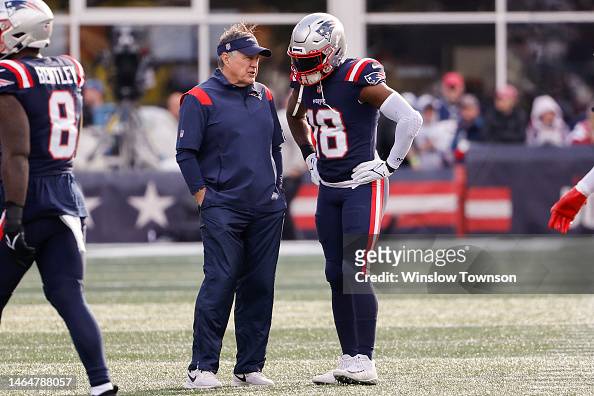Football in the United States comes in two distinct flavors: the National Football League (NFL) and college football. Each presents the game in a unique light. The NFL, known for its professional level of play, contrasts with college football, which is rooted in academic institutions and amateur athletes. This distinction encompasses differences in rules, gameplay style, and the cultural significance of each game.
Structure and Organization
In American football, both college and NFL games share a fundamental set of rules, but they differ significantly in their organization. The NFL, composed of 32 professional teams, operates under a centralized management. This structure ensures uniformity in rules, schedules, and playoff formats. In contrast, college football encompasses a vast number of teams, divided into different conferences and divisions. Each conference in college football has its own management, leading to variations in schedules and postseason play.
Game Rules and Play Style
Embed from Getty ImagesWhile the basic rules of football are consistent across both college and NFL games, notable differences exist. In college football, the clock stops briefly after each first down, leading to potentially longer games. Another distinct rule is the one-foot inbounds rule for a catch in college football, compared to the two-feet rule in the NFL. These variations influence the play style, where college games often appear faster-paced and more unpredictable.
Player Recruitment and Development
A key difference between the NFL and college football lies in player recruitment and development. NFL teams select new players through the annual NFL Draft, where only the most skilled college players are chosen. In college football, recruitment is an ongoing process, with coaches scouting high school talent. The developmental focus in college also varies, with a stronger emphasis on education and player growth.
Fan Experience and Culture
Embed from Getty ImagesThe culture surrounding fan engagement in NFL and college football is distinctly different. NFL games, with their professional environment, attract a diverse audience, including families and corporate groups. College football games are deeply rooted in school spirit, often drawing in current students, alumni, and local communities. The atmosphere at college games is characterized by longstanding traditions and intense rivalries.
Economic Aspects
Financially, the NFL and college football operate on different scales. The NFL generates substantial revenue from TV rights, sponsorships, and merchandise, contributing to high player salaries and expansive team facilities. College football, although financially significant, often reinvests its earnings into broader university programs and facilities. The financial model of college sports, including football, is a subject of ongoing discussion, especially regarding athlete compensation.
Postseason Structure
Embed from Getty ImagesThe postseason in the NFL and college football presents another area of contrast. The NFL follows a playoff system leading to the Super Bowl, where teams are selected based on their regular-season performance. In college football, postseason play includes a variety of bowl games, with teams chosen based on their rankings and conference affiliations. Additionally, the College Football Playoff system determines the national champion among the top-ranked teams.
Talent and Competition Level
The level of talent and competition in the NFL is consistently high, with all players being professionals who have usually excelled in college football. In contrast, college football features a mix of emerging talents at various stages of development. This diversity results in a broader range of competition levels across different conferences and teams.
The Influence of Super Bowl Betting
Embed from Getty ImagesThe impact of the Super Bowl extends beyond just the NFL to the broader world of sports betting. Betting on the Super Bowl is a major event, with fans and bettors analyzing every aspect of the game. The lines will continue to shift, but you can always look for the current Super Bowl odds to know how things have changed. This dynamic aspect of the sport adds the element of engagement for fans.
Coaching Styles and Strategies
Coaching in the NFL and college football varies significantly due to the differences in player experience and team dynamics. NFL coaches deal with professional athletes, requiring strategies that cater to experienced players. College coaches often focus on fundamental skills and player development, considering the varied levels of experience and maturity among their players.
Impact on Player Careers
For many athletes, college football serves as a stepping stone to the NFL. Performance in college can greatly influence a player’s prospects in the NFL Draft. However, not all college players make it to the professional level. The NFL represents the pinnacle of football talent, with a focus on long-term careers in the sport.
Media Coverage and Broadcasting
Embed from Getty ImagesMedia coverage of NFL and college football also differs. The NFL, with its nationwide appeal, attracts major broadcasting deals and extensive media attention. College football, while also receiving significant coverage, often sees media attention focused on major conferences and top-ranked teams. This difference in coverage affects how fans engage with and follow their preferred form of the sport.
Conclusion
In summary, NFL and college football, while sharing the core rules of the game, differ in organization, rules, player development, fan culture, economic aspects, postseason structures, talent levels, betting dynamics, coaching styles, player career impacts, and media coverage. These differences contribute to the unique identities of both forms of the sport, each offering distinct experiences for players and fans alike.
Come check out Belly Up Sports on Twitter/X for more sports and entertainment news and content. Featured image credit to Tim Nwachukwu/Staff/Getty Images.






